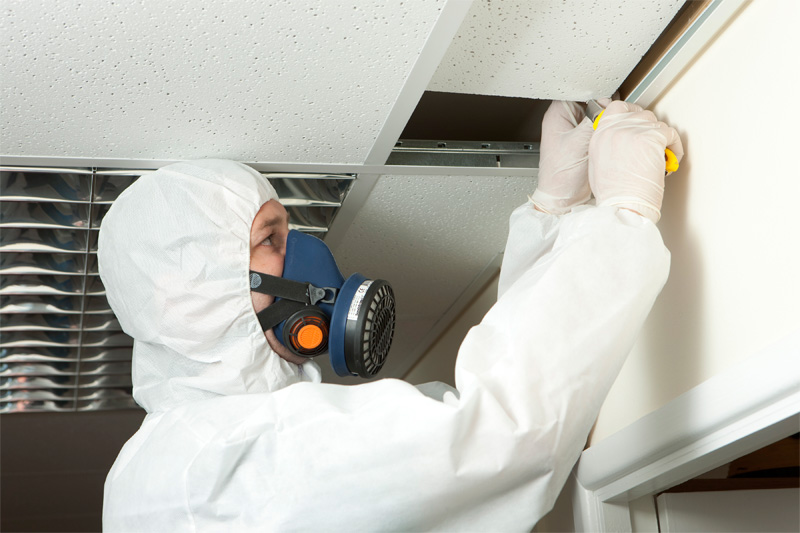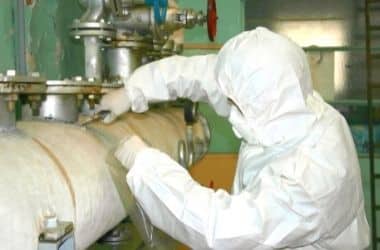Professional Tips for Carrying Out Dependable Asbestos Checking in Buildings and Frameworks
In the world of structure upkeep and security, the significance of carrying out trusted asbestos testing in structures can not be overemphasized. From older residential homes to industrial structures, the presence of asbestos postures a substantial health threat if not appropriately recognized and managed. Comprehending the nuances of asbestos screening, such as the various sampling methods and the crucial distinctions between DIY screening and expert services, is necessary for making certain exact outcomes. Nevertheless, navigating the intricacies of interpreting examination results and applying reliable risk administration methods can be a complicated job for several. It is in these essential areas that expert assistance and suggestions can drop light on finest practices and make sure the safety and security of occupants and workers alike.

Relevance of Asbestos Testing
Carrying out asbestos screening in buildings and structures is critical for safeguarding the health and well-being of residents and employees. Asbestos, as soon as a prominent building material recognized for its fireproof buildings, has actually given that been connected to severe wellness risks, consisting of lung cancer cells and mesothelioma cancer.

Testing Techniques
Asbestos testing in buildings and structures demands exact tasting techniques to accurately examine the visibility and condition of asbestos-containing products. One typically used tasting technique is the factor counting method, where samples are gathered from various structure products believed to include asbestos, such as insulation, ceiling tiles, or floor covering. Using the best sampling techniques is vital for obtaining exact asbestos screening outcomes and making sure the safety and security of passengers in buildings and structures.
Do It Yourself Testing Vs. Expert Solutions
When thinking about asbestos screening for buildings and structures, the option between diy (DIY) screening and expert services is an essential choice that can impact the precision and integrity of the results. Do it yourself testing kits are offered for purchase, offering a cost-efficient option for individuals aiming to evaluate the visibility of asbestos in their residential property. These packages generally consist of directions on exactly how to gather samples, which are after that sent to a laboratory for analysis. While DIY testing might appear like a convenient option, it is necessary to keep in mind that the results may not constantly be as exact as those obtained with professional services.

Interpreting Examination Outcomes
The accuracy and dependability of asbestos test results, whether acquired through specialist solutions or DIY testing, play a crucial duty in identifying the following steps for managing possible asbestos hazards in structures and structures. Examination results typically suggest the visibility or absence of asbestos fibers in the tasted products, along with the focus of asbestos existing if it is detected. Proper analysis of asbestos examination results is crucial for ensuring the safety and security of occupants and employees in the building and abiding with asbestos guidelines and guidelines.
Risk Administration Strategies
Successfully applying proactive threat monitoring methods is vital for guarding residents and employees in buildings with prospective asbestos threats (Asbestos Testing). To begin, conducting extensive danger evaluations is important to recognize the existence of asbestos-containing products (ACMs) and examine the level of danger they posture. This involves checking the building, collecting samples for testing, and assessing the outcomes to establish the suitable course of action
When the presence of ACMs is confirmed, it is necessary to develop and implement an extensive monitoring strategy that lays out procedures for handling and controlling asbestos threats. This plan click site needs to consist of actions such as asbestos encapsulation, removal, or recurring monitoring to prevent direct exposure and minimize wellness threats. In addition, establishing clear communication networks to inform residents and employees regarding the visibility of asbestos and the protective steps in position is vital for guaranteeing their security.
Routine surveillance and look at more info review of asbestos threats are also essential elements of efficient danger monitoring strategies. By staying positive and attentive, building owners and supervisors can create a safe setting and avoid potential asbestos-related wellness hazards.
Final Thought
To conclude, conducting dependable asbestos testing in structures and frameworks is important for recognizing prospective health and wellness dangers and making certain safety. By adhering to correct tasting techniques, considering the benefits of specialist services over DIY testing, analyzing test results accurately, and executing reliable danger administration techniques, people can successfully manage and mitigate the dangers connected with asbestos exposure. It is essential to focus on safety and stick to strict testing procedures to safeguard the wellness of occupants and employees.